Compartmentalizing Donor-Acceptor Stenhouse Adducts for Structure-Property Relationship Analysis
- PMID: 39729546
- PMCID: PMC11726581
- DOI: 10.1021/jacs.4c14198
Compartmentalizing Donor-Acceptor Stenhouse Adducts for Structure-Property Relationship Analysis
Abstract
The development of photoswitches that absorb low energy light is of notable interest due to the growing demand for smart materials and therapeutics necessitating benign stimuli. Donor-acceptor Stenhouse adducts (DASAs) are molecular photoswitches that respond to light in the visible to near-infrared spectrum. As a result of their modular assembly, DASAs can be modified at the donor, acceptor, triene, and backbone heteroatom molecular compartments for the tuning of optical and photoswitching properties. This Perspective focuses on the electronic and steric contributions at each compartment and how they influence photophysical properties through the adjustment of the isomerization energetic landscape. An emphasis on current synthetic strategies and their limitations highlights opportunities for DASA architecture, and thus photophysical property expansion.
Conflict of interest statement
The authors declare no competing financial interest.
Figures







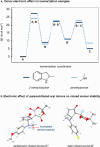

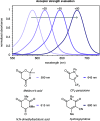

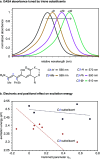
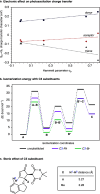

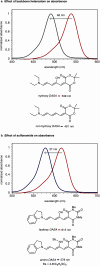


Similar articles
-
Development and characterization of amino donor-acceptor Stenhouse adducts.Nat Commun. 2024 Jul 1;15(1):5533. doi: 10.1038/s41467-024-49808-7. Nat Commun. 2024. PMID: 38951197 Free PMC article.
-
Donor-Acceptor Stenhouse Adduct-Polydimethylsiloxane-Conjugates for Enhanced Photoswitching in Bulk Polymers.Macromol Rapid Commun. 2022 Aug;43(15):e2200120. doi: 10.1002/marc.202200120. Epub 2022 May 1. Macromol Rapid Commun. 2022. PMID: 35396766
-
Tailoring Photoisomerization Pathways in Donor-Acceptor Stenhouse Adducts: The Role of the Hydroxy Group.J Phys Chem A. 2018 Feb 1;122(4):955-964. doi: 10.1021/acs.jpca.7b10255. Epub 2018 Jan 18. J Phys Chem A. 2018. PMID: 29275633
-
Visible light-responsive materials: the (photo)chemistry and applications of donor-acceptor Stenhouse adducts in polymer science.Chem Soc Rev. 2023 Nov 27;52(23):8245-8294. doi: 10.1039/d3cs00508a. Chem Soc Rev. 2023. PMID: 37905554 Free PMC article. Review.
-
Synthesis and Applications of Stenhouse Salts and Derivatives.Chemistry. 2018 Jul 2;24(37):9170-9186. doi: 10.1002/chem.201705851. Epub 2018 Apr 6. Chemistry. 2018. PMID: 29393530 Review.
Cited by
-
Expanding the Molecular Switches Toolbox: Photoreloadable Dithienylethene Mechanophores.Angew Chem Int Ed Engl. 2025 Apr 17;64(17):e202422549. doi: 10.1002/anie.202422549. Epub 2025 Feb 21. Angew Chem Int Ed Engl. 2025. PMID: 39931751 Free PMC article.
-
Excited-State Dynamics and Electron-Withdrawing Group Effects in Two-Photon Switchable Donor-Acceptor Stenhouse Adducts.Chemistry. 2025 Apr 15;31(22):e202500046. doi: 10.1002/chem.202500046. Epub 2025 Mar 12. Chemistry. 2025. PMID: 40025662 Free PMC article.
References
-
- Boelke J.; Hecht S. Designing Molecular Photoswitches For Soft Materials Applications. Adv. Opt. Mater. 2019, 7, 190040410.1002/adom.201900404. - DOI
-
- Abdollahi A.; Roghani-Mamaqani H.; Razavi B. Stimuli-Chromism Of Photoswitches In Smart Polymers: Recent Advances And Applications. Prog. Polym. Sci. 2019, 98, 10114910.1016/j.progpolymsci.2019.101149. - DOI
-
- Andreasson J.; Pischel U. Light-Stimulated Molecular And Supramolecular Systems For Information Processing And Beyond. Coord. Chem. Rev. 2021, 429, 21369510.1016/j.ccr.2020.213695. - DOI
Publication types
Grants and funding
LinkOut - more resources
Full Text Sources
Research Materials

